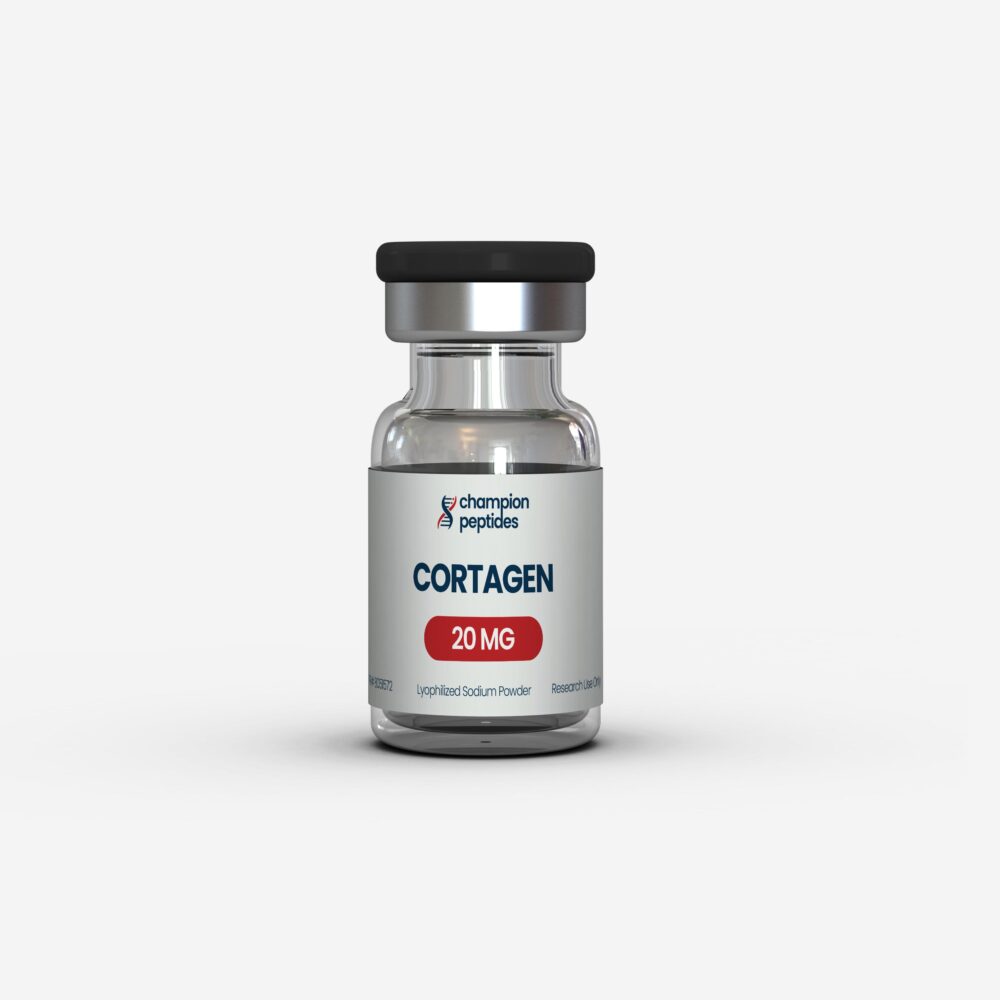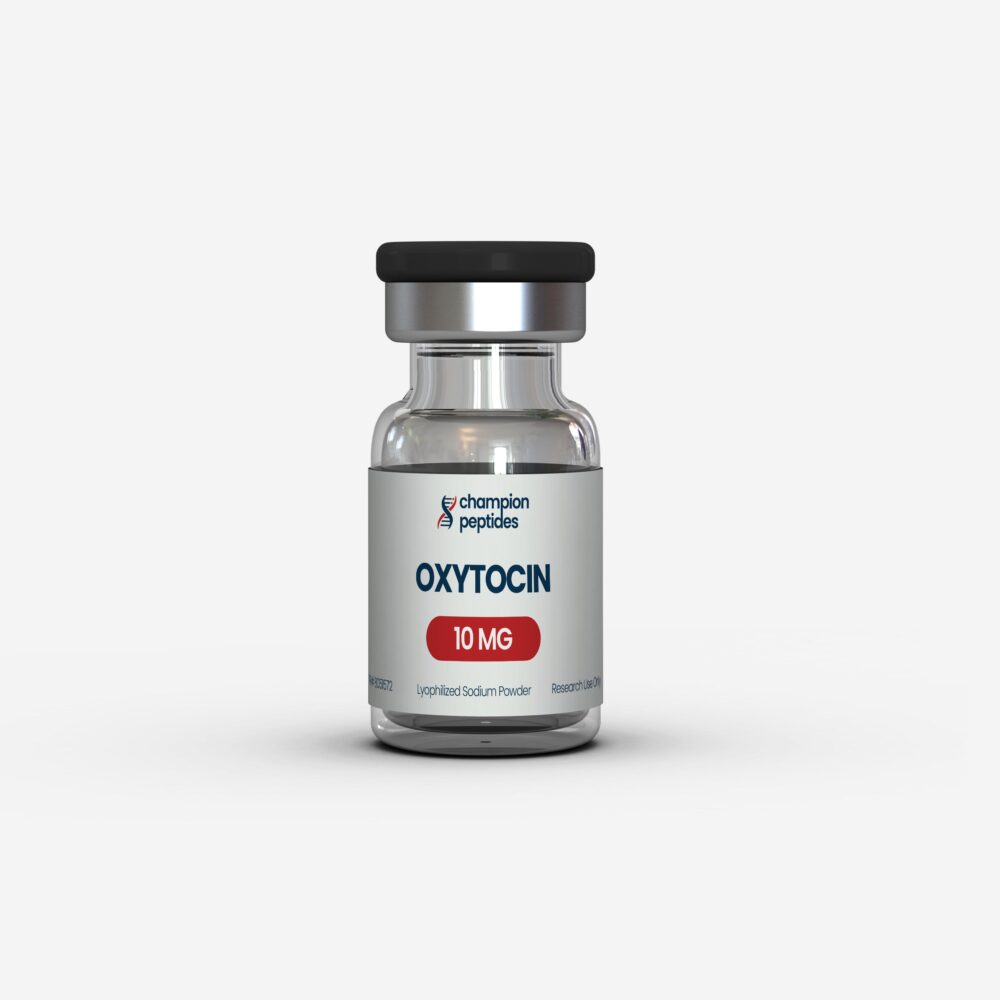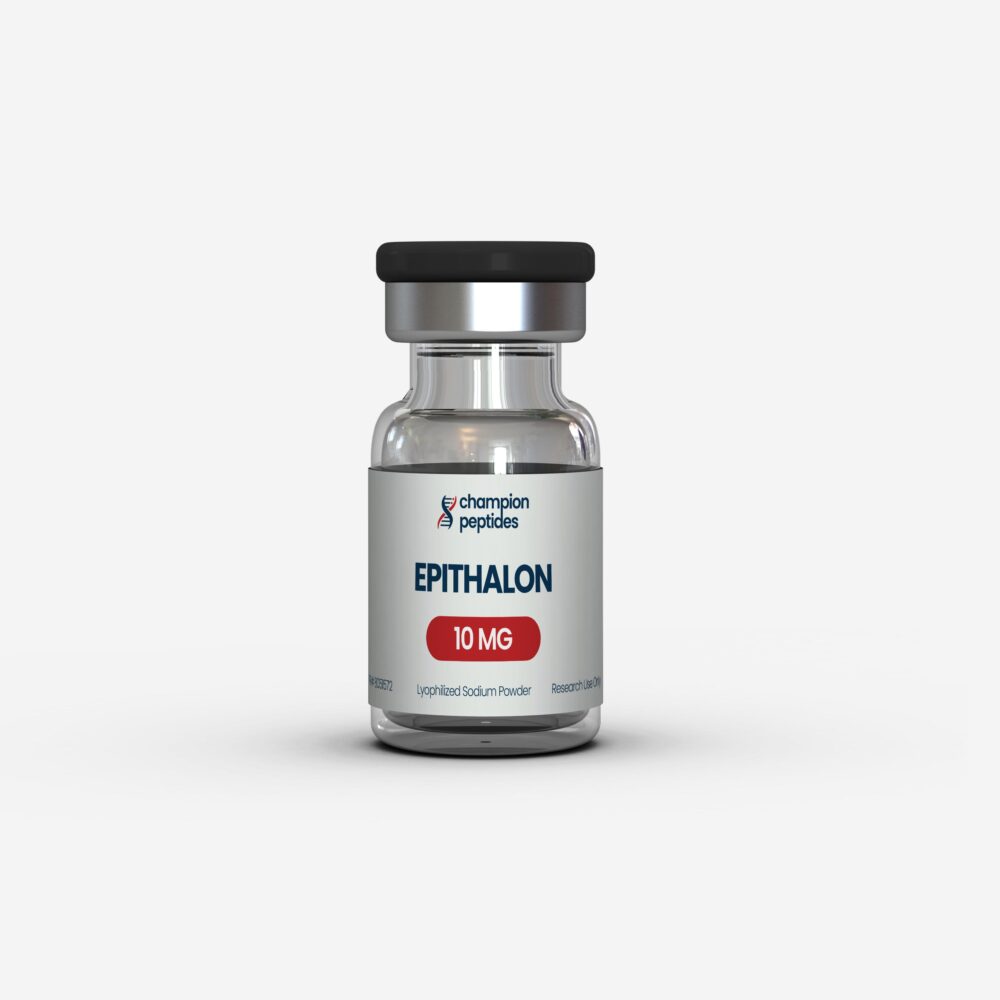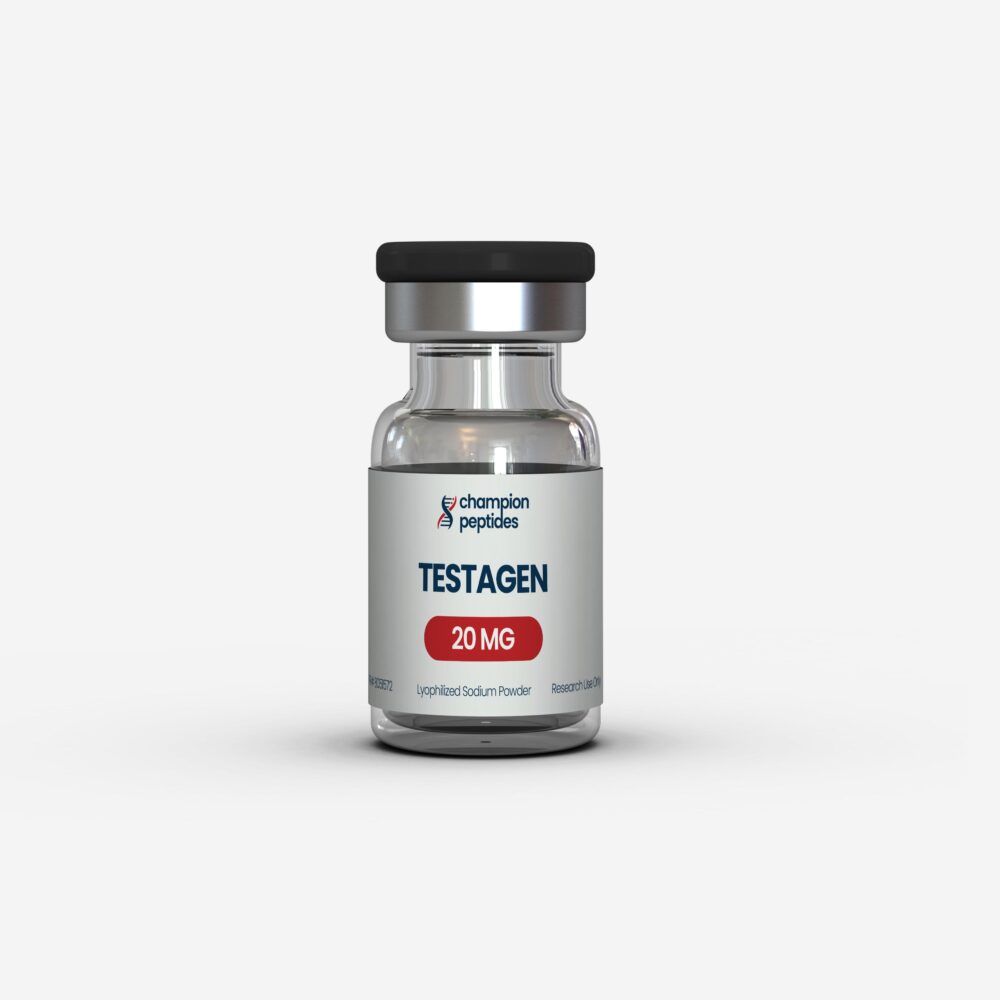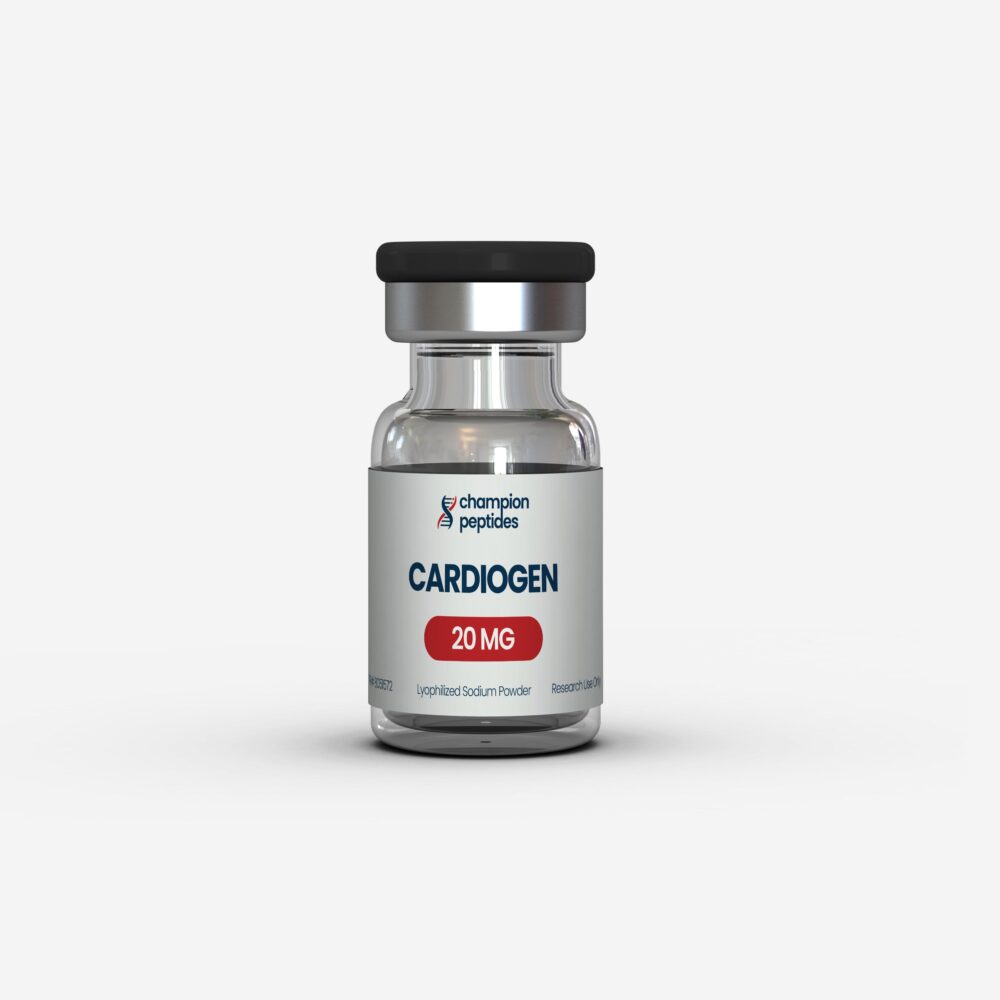- MOTS-c prevents pancreatic islet cell senescence and delays diabetes progression in laboratory models
- This mitochondrial-derived peptide enhances cellular metabolism through AMPK/SIRT1 pathway activation
- Recent studies show 48% reduction in cellular apoptosis and 52% decrease in senescence markers
- Research demonstrates potential applications in neurodegenerative diseases and cardiovascular protection
- Studies indicate superior mitochondrial protection compared to traditional metabolic interventions
Contents
Scientific Overview and Mechanisms
The MOTS-c peptide represents a groundbreaking discovery in mitochondrial research, emerging as one of the most significant mitochondrial-derived peptides studied in recent years. This 16-amino acid peptide, encoded by the mitochondrial 12S rRNA open reading frame, has captured the attention of researchers worldwide for its remarkable ability to regulate cellular metabolism and enhance stress resistance.
Champion Peptides recognizes the revolutionary potential of this mitochondrial peptide in advancing our understanding of cellular protection mechanisms. Laboratory investigations consistently demonstrate that MOTS-c functions as a crucial regulator of energy homeostasis, influencing multiple cellular pathways that control metabolic flexibility and mitochondrial function.
Recent research has unveiled the compound’s unique mechanism of action, which operates through several interconnected pathways. These peptides activate the AMPK signaling cascade, a master regulator of cellular energy metabolism, while simultaneously enhancing SIRT1 expression, a critical protein involved in cellular longevity and stress response. The peptide’s ability to cross cellular barriers efficiently makes it particularly valuable for laboratory applications focused on metabolic dysfunction and cellular protection.
Studies indicate that this mitochondrial peptide exhibits exceptional stability and bioavailability compared to other peptide compounds. Its natural origin from mitochondrial genetic material provides inherent compatibility with cellular systems, reducing the likelihood of adverse reactions in research settings. The peptide’s multifaceted approach to cellular protection distinguishes it from synthetic alternatives, offering researchers a powerful tool for investigating metabolic regulation and cellular resilience.
MOTS-c Research Dosage Protocols
Laboratory studies investigating MOTS-c dosage per day have established comprehensive protocols across various research applications. The most commonly reported research dosages range from 5-20 mg/kg in animal models, with human equivalent calculations suggesting substantially lower amounts for future clinical applications.
| Research Model | Dosage Range | Administration Route | Study Duration | Primary Outcomes |
|---|---|---|---|---|
| Cellular Culture | 10-100 μM | Direct Application | 24-72 hours | Mitochondrial function |
| Rodent Models | 15-20 mg/kg | Intraperitoneal | 2-8 weeks | Metabolic parameters |
| Diabetes Research | 5-15 mg/kg | Daily injection | 3-12 weeks | Glucose homeostasis |
| Neuroprotection Studies | 20 mg/kg | Intraperitoneal | 4 hours pre-treatment | Brain injury markers |
| Cardiovascular Research | 15 mg/kg | Daily injection | 3 weeks | Cardiac function |
Research protocols emphasize the importance of timing when considering how to take MOTS-c in laboratory settings. Studies consistently show optimal results when administered during periods of metabolic stress or before experimental challenges. The peptide’s half-life and bioavailability profiles suggest that daily administration provides sustained benefits without accumulation concerns.
Investigators have noted that MOTS-c research applications benefit from careful consideration of individual experimental conditions. Factors such as age, metabolic status, and concurrent treatments significantly influence optimal dosing strategies. Recent research by Kong et al. (2025) demonstrated that lower doses (5-10 mg/kg) effectively prevented pancreatic islet senescence, while higher doses (15-20 mg/kg) provided enhanced neuroprotection in sepsis models.
Temperature stability and storage conditions also impact dosing considerations. Laboratory studies indicate that properly stored peptide solutions maintain potency for extended periods, allowing for consistent dosing across long-term investigations. Researchers emphasize the importance of reconstitution protocols and storage at appropriate temperatures to maintain peptide integrity throughout experimental periods.
Clinical Research Evidence
Recent Studies (2024-2025)
The latest research investigations have yielded remarkable insights into the therapeutic potential of this mitochondrial peptide. A groundbreaking study by Kong et al. (2025, PMID: 40855115) demonstrated that MOTS-c levels decrease with aging and senescence in pancreatic islet cells, while treatment with the peptide significantly reduced cellular senescence by modulating nuclear gene expression and metabolic pathways involved in β-cell function.
Particularly compelling research by Bai et al. (2025, PMID: 40753494) revealed the compound’s neuroprotective capabilities in sepsis-associated brain injury. Their investigation showed that MOTS-c treatment increased survival rates, decreased sepsis severity scores, and crucially protected blood-brain barrier integrity. The study demonstrated upregulated expression of barrier-related proteins and decreased inflammatory markers, suggesting broad neuroprotective applications beyond metabolic disorders.
Cardiovascular research has yielded equally impressive results. Pham et al. (2025, PMID: 40661667) conducted extensive mitochondrial bioenergetic analysis of heart tissues from diabetic models, revealing that this peptide treatment restored mitochondrial respiration capacity and improved glucose homeostasis. Their findings showed increased OXPHOS respiration and decreased ATP hydrolysis rates during metabolic stress, indicating enhanced cardiac efficiency.
Human clinical observations have begun to emerge, with Yildiz Ozkaya et al. (2025, PMID: 41004666) investigating serum levels in individuals with and without obesity. Their research involving 85 participants revealed significant correlations between peptide levels and insulin resistance markers, with age and HOMA-IR serving as significant predictors of circulating concentrations.
Respiratory research has opened new avenues for investigation. Luo et al. (2024, PMID: 40538389) examined serum levels in 77 participants with obstructive sleep apnea, finding inverse correlations between peptide concentrations and disease severity. This research suggests potential applications in sleep-related metabolic dysfunction and respiratory health.
Recent musculoskeletal research by Sidorenko et al. (2025, PMID: 40608240) demonstrated that daily administration during hindlimb unloading prevented muscle fiber transformation, reduced atrophy markers, and maintained fatigue resistance. The study showed prevented decreases in Akt and GSK3β phosphorylation while maintaining normal ribosomal RNA levels, indicating comprehensive muscle preservation benefits.
Innovative therapeutic applications have emerged in regenerative medicine. Lin et al. (2024, PMID: 40510834) developed a novel peptide-hydrogel delivery system for intervertebral disc degeneration, demonstrating 1.8-fold enhanced cell viability and 2.3-fold increased collagen II expression. Their in vivo validation showed 82.4% disc height preservation compared to 58.7% in untreated controls.
MOTS-c Peptide Benefits in Laboratory Studies
Research investigations have consistently identified multifaceted benefits of this mitochondrial peptide across diverse biological systems. The most significant MOTS-c benefits emerge from its fundamental role in cellular energy regulation and stress response modulation. Laboratory findings demonstrate enhanced mitochondrial biogenesis, improved oxidative stress resistance, and strengthened cellular protective mechanisms.
Metabolic research reveals particularly impressive outcomes. Studies show that treatment enhances fatty acid oxidation while improving glucose utilization efficiency, creating optimal metabolic flexibility. This dual benefit allows cells to seamlessly transition between energy substrates based on availability and demand, a crucial factor in maintaining cellular health during stress conditions.
Neurological research has unveiled significant cognitive and neuroprotective benefits. Thakur et al. (2024, PMID: 40715951) reviewed the peptide’s role in neurodegenerative diseases, highlighting its ability to mitigate oxidative stress, reduce neuroinflammation, and support neuroplasticity. These findings suggest applications in Alzheimer’s disease, Parkinson’s disease, and Huntington’s disease research models.
Cardiovascular benefits extend beyond metabolic improvements. Research demonstrates enhanced endothelial function, improved vascular resilience, and reduced inflammatory responses in cardiovascular tissues. Sivakumar et al. (2024, PMID: 40574402) emphasized the peptide’s role in combating vascular aging through modulation of AMPK, mTOR, and sirtuin pathways, which are essential for cellular longevity and stress adaptation.
Recent sleep research has identified novel applications in respiratory health. The correlation between peptide levels and sleep apnea severity suggests potential benefits for metabolic complications associated with sleep disorders. Research indicates improved stress resilience and metabolic stability in challenging physiological conditions.
Heat stress research by Elhusseiny et al. (2024, PMID: 40674654) revealed that repeated heat exposure upregulated circulating peptide levels while downregulating skeletal muscle inflammatory markers. This research suggests that environmental stress adaptation mechanisms can be enhanced through peptide modulation, offering new perspectives on stress resilience training.
Research Community Perspectives
The scientific research community has demonstrated unprecedented interest in mitochondrial-derived peptides, with laboratory investigators increasingly recognizing their potential for addressing complex metabolic and cellular protection challenges. Research interest indicators from various scientific forums suggest growing enthusiasm for investigations into cellular protection mechanisms and metabolic optimization strategies.
Community discussions frequently center on optimal research protocols and experimental design considerations. Investigators emphasize the importance of proper controls and standardized methodologies when evaluating peptide effects across different research models. The complexity of mitochondrial function requires sophisticated analytical approaches that account for multiple variables and potential confounding factors.
Research trend indicators show particular interest in combination therapies and synergistic approaches. Scientists are exploring how this mitochondrial peptide might enhance the effectiveness of existing interventions or provide additive benefits when combined with other cellular protection strategies. This collaborative approach reflects the scientific community’s recognition that complex biological challenges often require multifaceted solutions.
Quality control discussions within research communities emphasize the critical importance of peptide purity and storage conditions. Laboratory protocols stress the need for proper handling procedures and verification of peptide integrity throughout experimental periods. These considerations directly impact research reproducibility and outcome reliability.
International research collaboration patterns indicate growing global interest in mitochondrial peptide research. Publications from diverse geographic regions demonstrate consistent findings across different populations and experimental conditions, strengthening the evidence base for therapeutic applications and research validity.
Research Applications and Laboratory Access
Laboratory applications of this mitochondrial peptide span multiple research disciplines, from basic cellular biology to complex disease modeling. Research protocols have been developed for investigating metabolic dysfunction, cellular senescence, neurodegeneration, and cardiovascular health, providing researchers with versatile tools for addressing diverse scientific questions.
Primary research applications focus on mitochondrial function assessment and metabolic flexibility evaluation. Investigators utilize the peptide to study cellular energy production, oxidative stress responses, and adaptive mechanisms under various challenging conditions. These studies contribute to our understanding of fundamental cellular processes and potential therapeutic interventions.
Neuroscience research applications have expanded significantly, with protocols developed for investigating cognitive function, neuroprotection, and neurodegenerative disease models. The peptide’s ability to cross biological barriers makes it particularly valuable for brain research applications where delivery challenges often limit experimental options.
Cardiovascular research protocols encompass studies of cardiac function, vascular health, and circulatory system protection. Research designs often incorporate stress testing, ischemia models, and aging studies to evaluate the peptide’s protective capabilities under various pathological conditions.
For research purposes only, specialized laboratory protocols have been developed to ensure optimal experimental conditions and reliable results. These protocols address critical factors such as preparation methods, storage requirements, administration routes, and outcome measurement techniques that directly impact research quality and reproducibility.
Quality assurance in laboratory applications requires adherence to strict handling and storage protocols. Research-grade peptides must maintain stability and potency throughout experimental periods, necessitating proper refrigeration, appropriate solvents, and contamination prevention measures. These considerations are essential for maintaining experimental integrity and ensuring reliable results.
Frequently Asked Questions
What are the primary MOTS-c peptide benefits observed in research studies?
Research consistently demonstrates multiple benefits including enhanced mitochondrial function, improved metabolic flexibility, and increased cellular protection against stress. Studies show significant improvements in glucose homeostasis, reduced inflammation markers, and enhanced stress resilience across various research models. These peptides demonstrate particular efficacy in protecting against age-related cellular dysfunction and metabolic disorders.
How do researchers determine optimal MOTS-c dosage per day in laboratory studies?
Laboratory protocols typically utilize dosage ranges of 5-20 mg/kg in animal models, with specific amounts determined by research objectives and experimental conditions. Factors including study duration, administration route, and target outcomes influence dosing decisions. Researchers emphasize the importance of pilot studies and dose-response evaluations to establish optimal protocols for specific research applications.
When should researchers consider using MOTS-c in experimental protocols?
Research applications are most appropriate when investigating mitochondrial dysfunction, metabolic disorders, cellular senescence, or stress response mechanisms. Studies suggest optimal timing includes pre-treatment protocols for protective applications and ongoing administration for metabolic research. Investigators should consider experimental objectives, model systems, and outcome measures when determining appropriate timing and duration.
What are potential MOTS-c side effects observed in research studies?
Laboratory studies generally report minimal adverse effects when proper protocols are followed. Research indicates excellent tolerability across various dosing ranges and administration methods. However, researchers should monitor for potential injection site reactions, maintain appropriate dosing schedules, and follow established safety protocols. Long-term safety data continues to accumulate through ongoing research investigations.
How does MOTS-c compare to other mitochondrial research compounds?
Research suggests this mitochondrial peptide offers unique advantages including natural origin, excellent stability, and broad biological activity. Compared to synthetic alternatives, studies indicate superior bioavailability and reduced immunogenicity. The peptide’s multiple mechanisms of action distinguish it from single-target compounds, providing researchers with comprehensive cellular protection capabilities. Comparative studies continue to evaluate relative advantages across different research applications.
What proper storage and handling procedures are required for MOTS-c research?
Laboratory protocols require refrigerated storage at 2-8°C for reconstituted solutions and freezer storage for lyophilized peptide. Proper reconstitution using sterile bacteriostatic water and gentle mixing prevents degradation. Research applications should avoid repeated freeze-thaw cycles and maintain sterile conditions throughout handling. These procedures ensure peptide stability and experimental reproducibility.
What research models have been used to study MOTS-c peptide injection protocols?
Studies have utilized diverse models including cellular cultures, rodent diabetes models, cardiovascular research protocols, and neurological protection studies. Administration routes include intraperitoneal injection, subcutaneous delivery, and direct tissue application depending on research objectives. Each model provides specific insights into peptide mechanisms and potential therapeutic applications for research purposes only.
How do researchers evaluate MOTS-c peptide results in laboratory studies?
Research evaluation typically includes mitochondrial function assessments, metabolic parameter measurements, inflammatory marker analysis, and cellular viability testing. Studies often incorporate multiple time points and control comparisons to establish efficacy and dose-response relationships. Advanced techniques including respirometry, gene expression analysis, and protein quantification provide comprehensive outcome data for research validation.
What makes MOTS-c weight loss research particularly significant?
Research indicates this peptide influences weight regulation through enhanced mitochondrial efficiency and improved metabolic flexibility rather than appetite suppression alone. Studies demonstrate increased fatty acid oxidation, enhanced glucose utilization, and improved insulin sensitivity. These mechanisms suggest sustainable metabolic improvements that support healthy weight management through fundamental cellular optimization rather than temporary interventions.
Are there specific MOTS-c side effects cancer research should consider?
Current research does not indicate concerning interactions with cancer models, though investigators should maintain appropriate caution with any research compound. The peptide’s cellular protection mechanisms may actually provide beneficial effects in certain cancer research contexts. However, researchers working with cancer models should conduct preliminary safety evaluations and consult relevant literature before incorporating into experimental protocols for research applications.
Conclusion
The revolutionary potential of MOTS-c peptide research continues to unfold as scientists worldwide investigate its remarkable capabilities for cellular protection and metabolic optimization. From groundbreaking studies demonstrating pancreatic islet protection to innovative applications in neurodegenerative disease research, this mitochondrial peptide represents a paradigm shift in our understanding of cellular resilience and therapeutic intervention strategies.
Recent research achievements, including significant reductions in cellular senescence markers and enhanced mitochondrial function across diverse biological systems, position these peptides at the forefront of regenerative medicine and metabolic health research. The comprehensive evidence base spanning cardiovascular protection, neurological enhancement, and metabolic optimization provides researchers with unprecedented opportunities to address complex biological challenges through fundamental cellular mechanisms.
As the scientific community continues to explore the therapeutic potential of mitochondrial-derived peptides, Champion Peptides remains committed to supporting cutting-edge research through high-quality laboratory materials and comprehensive research support. The future of cellular protection and metabolic optimization research appears increasingly promising as investigators worldwide contribute to our expanding understanding of these remarkable biological compounds designed for research purposes only.


